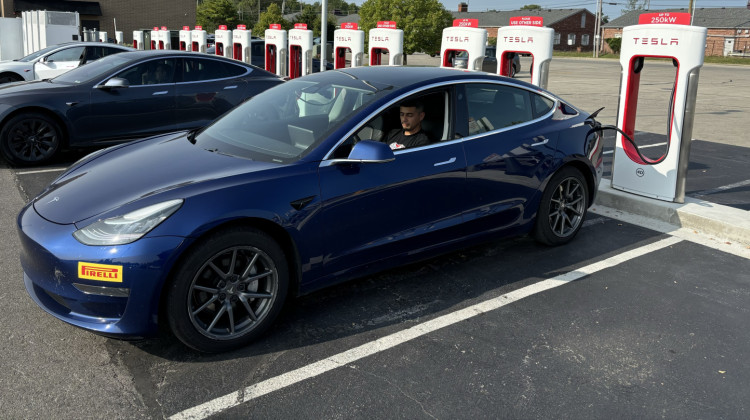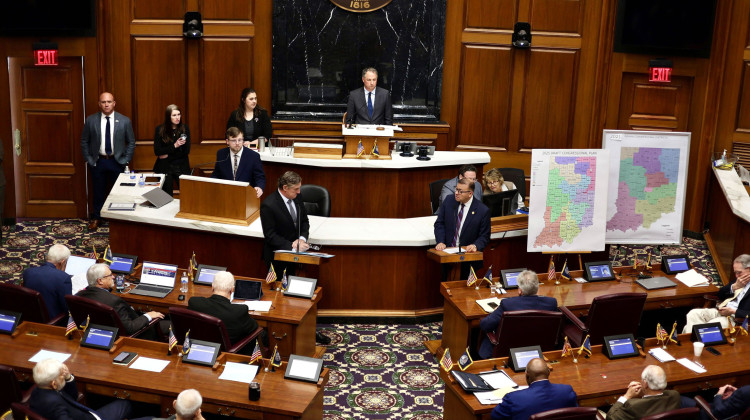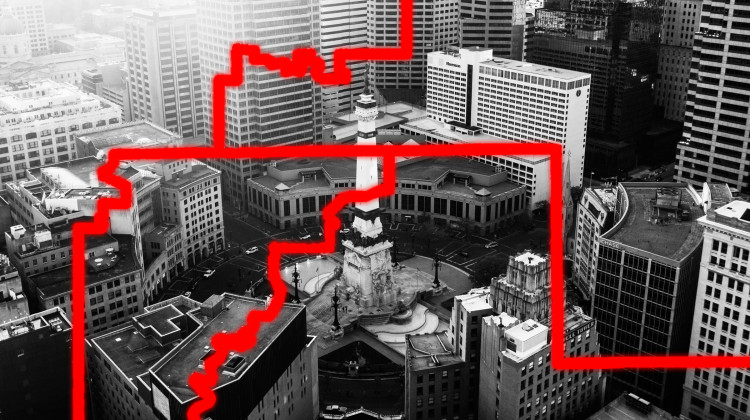
Fernando Martinez charges his electric vehicle at a Tesla Supercharger station. Indianapolis is among the worst in the country for energy efficiency, especially when it comes to the transportation sector.
Abriana Herron / WFYIClimate change is on the top of mind for many Indianapolis residents. The city has increased many of its sustainability efforts, but it continues to fall behind one area, clean transit.
When the 2024 City Clean Energy Scorecard was released this year, Indianapolis's ranking wasn't a surprise to Lindsay Trameri, community engagement manager with the city’s office of sustainability.
“I don't think any of us expected to be number one or top 10,” she said. “So to improve I think is a good sign. We'll be the first to tell you, yes we need to be doing more and we need to be moving quicker.”
Indianapolis is among the worst in the country for energy efficiency, according to the report by the American Council for an Energy-Efficient Economy, or ACEEE.
The report ranks cities on their sustainability efforts based on several factors, including electric vehicle infrastructure improvements, transit access and bikeability.
Transportation is a main factor contributing to Indianapolis’s low score as it makes up about third of the city’s total carbon emissions.
Stefen Samarripas, a senior manager at ACEEE, said Indianapolis has done a good amount of planning to lower emissions in the transportation sector, but there’s still more that could be done.
“In particular, I think there's a lot of room to do more in terms of thinking about those active modes of transportation and how to encourage those,” he said.
Indianapolis has struggled to create safe, connected infrastructure for walkers and bikers, and continues to heavily fund roadways and other projects to improve transportation for vehicles. Other reports have found the city consistently lags in areas of transit ridership, pedestrian activity and EV adoption rates.
The city does have a plan to improve emissions and promote clean transit with Thrive Indianapolis. Measures laid out in the plan include increasing greenways and trails and creating transit oriented development that builds more density in urban areas.
“That requires developments going in along our bus rapid transit lines,” Trameri said. “So the red line, the purple line that's coming in, and eventually the blue line, to be focused on serving individuals and lifestyles that don't require a car.”
When Indianapolis launched its first bus rapid transit program it committed to a fully electric fleet, a move in the right direction to reduce emissions. However the BRT lines have faced many challenges including push back from state legislators and increased prices in efforts to move forward.
Electric vehicles are another way to reduce emissions and promote clean transit.
It was a hot, early summer morning outside the Julia M. Carson Government Center along busy Fall Creek Parkway. The Indiana Department of Environmental Management issued several heat advisories that week.
Denise Abdul-Rahman was at the center for a meeting with the Indiana NAACP, where she is the environmental climate justice chair with the organization. She helped create the Indiana Alliance for Equity, Diversity, and Inclusion of Electric Vehicle Infrastructure and Economic Opportunities — a statewide coalition of minority organizations to ensure they benefit from having electric vehicle charging stations in their communities.
“So that EVs are traveling through our communities,” she said. “That we are not just hosting the diesel fumes and once again being the ones most disproportionately impacted, health wise, climate wise, economically wise, education wise.”
Abdul-Rahman said it’s not surprising that Indianapolis needs transit improvement, especially when it comes to implementation of EV infrastructure. Recently, the alliance called for a more equitable approach to the Indiana Department of Transportation’s EV Infrastructure plan.
“INDOT did just enough, but why not go over and above,” she said. “Why not do something that is truly meaningful that is going to include everyone.”
The coalition stated issues with transparency, public engagement and the selection of the charging sites. Six of the 39 planned charging stations are located near the Indianapolis area.
Trameri, with the city’s sustainability office, acknowledges the role EV infrastructure plays in curbing carbon emissions in Indianapolis, but she said it’s only a partial solution.
“It's not like the golden solution that's going to fit everything for so many reasons, equity being a huge one,” Trameri said.
Equitable transit can look like the Purple Line BRT project, set to launch in October, that has improved sidewalks along 38th Street and has invested in safer roadways in neighborhoods that need it the most.
The 2023 Thrive Indianapolis annual report states the city has exceeded its 2025 target goal for the number of registered EV’s and increased greenways and trails by nearly 23 miles since 2017.
The city intends to be carbon neutral by 2050.
Contact WFYI Morning Edition Newscaster and Reporter Abriana Herron at aherron@wfyi.org.
 DONATE
DONATE







 Support WFYI. We can't do it without you.
Support WFYI. We can't do it without you.